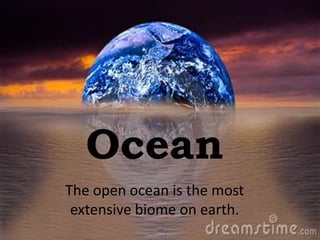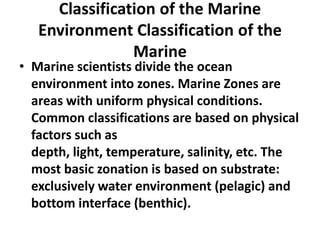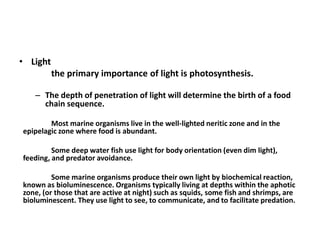The open ocean is the most extensive biome on Earth, covering over 360 million km2. It is divided into vertical zones based on factors like depth, light penetration, temperature, and pressure. The pelagic zone extends from the sea surface and is divided into epipelagic, mesopelagic, bathypelagic, and abyssopelagic zones. Phytoplankton in the epipelagic zone perform photosynthesis, while organisms in deeper aphotic zones rely on chemosynthesis. Human activities like overfishing, pollution, climate change, and habitat destruction threaten ocean ecosystems.

































